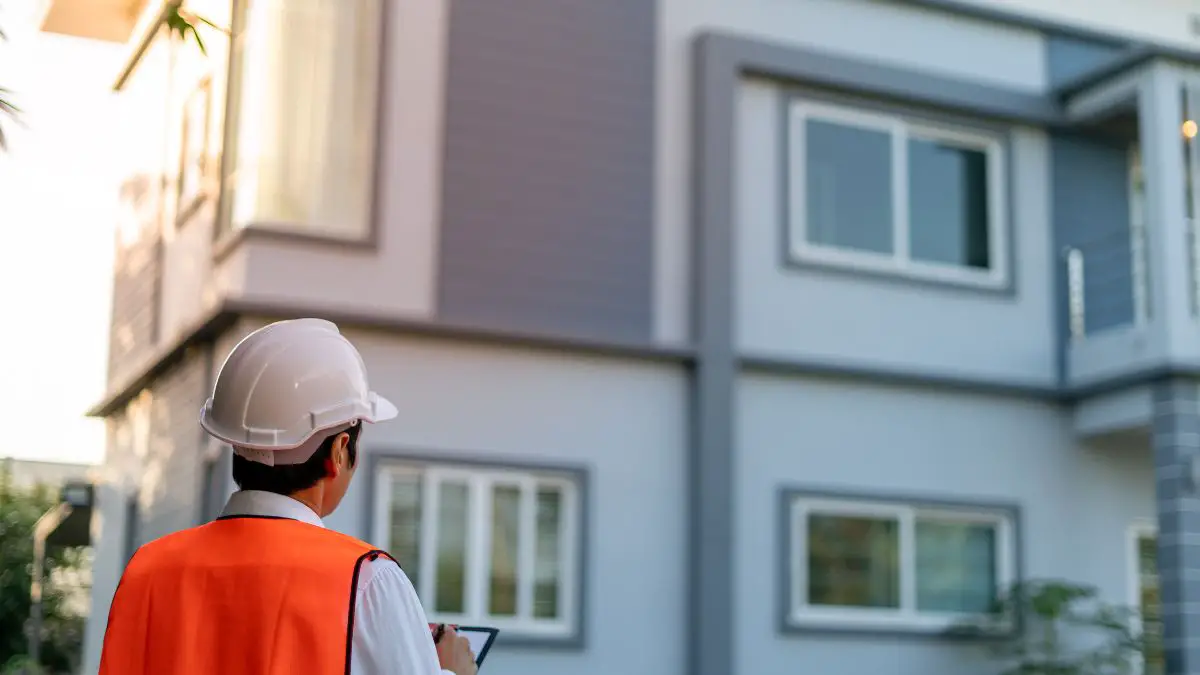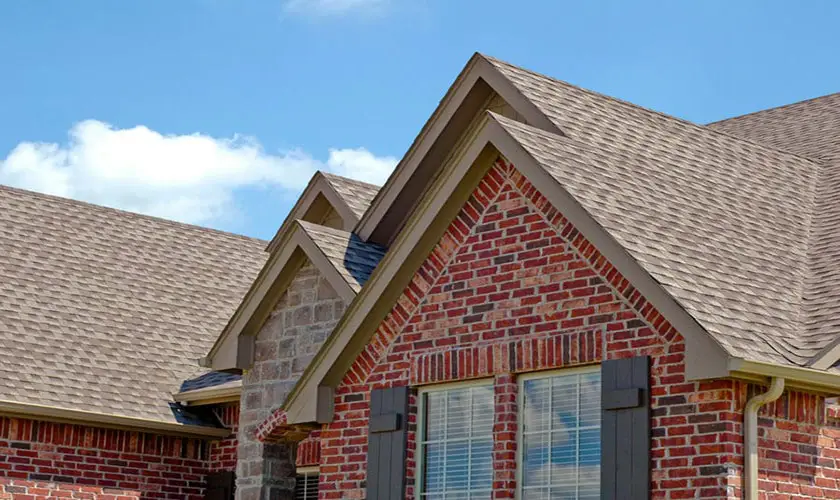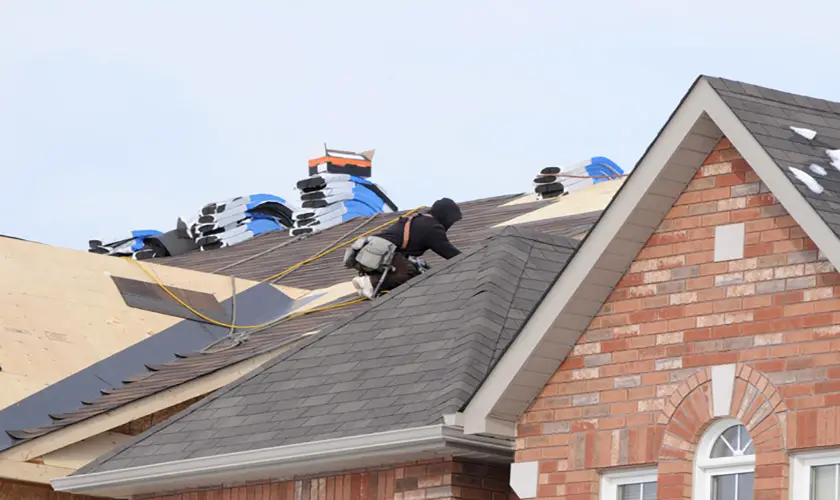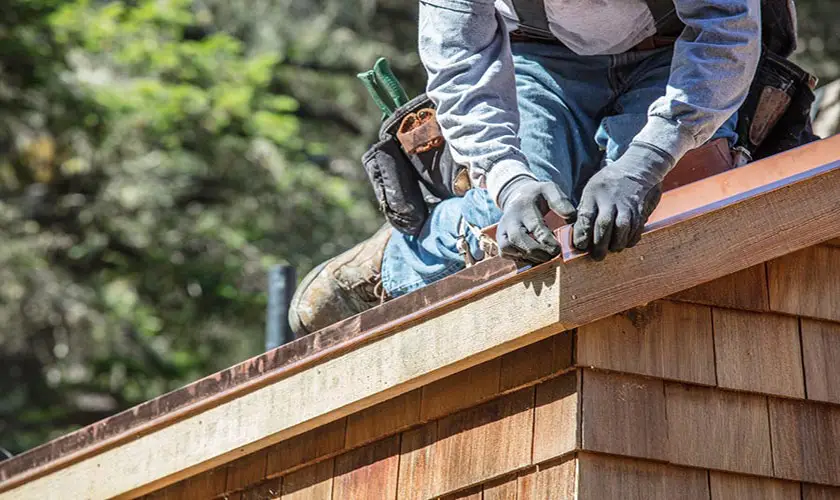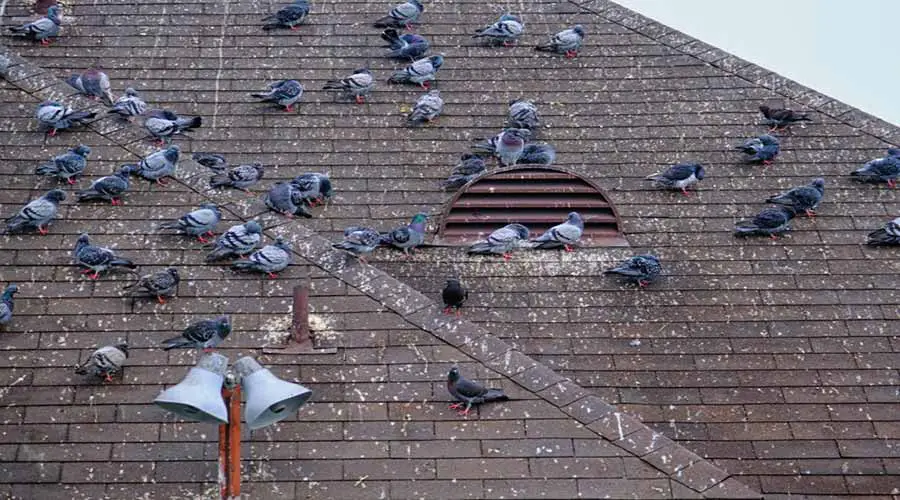
One of the more ignored parts of a house is the roof because it usually only gets noticed whenever it starts to leak or has visible damages.
You don’t have to wait for your roof to show obvious signs of wear and tear for you to replace it. If you regularly have your roof inspected, you can get it replaced as early as possible before it starts to damage the home’s structure.
In this article we will look at how often should you replace your roof and how long most roofing materials last.
The two main factors for roof replacement are age and materials. Roofing materials have varying life expectancies (see chart below). Ideally, roof inspections are recommended twice per year, especially with older roofs. It would be best to consider replacing the roof coverings with about 30% of the life expectancy remaining.
| Roofing Materials | Life Expectancy | When to Replace |
|---|---|---|
| Aluminum Coating | 3-7 Years | 4-5 Years. |
| 3 Tab Asphalt Shingles | 20 Years | 14-17 Years |
| Architecture Shingles | 30 Years | 21 -25 Years |
| Built-up Roofing | 30 Years | 21-25 Years |
| Cellulose Fiber | 20 Years | 14-17 Years |
| Clay/Concrete Tile | 100+ Years | 70 Years, routine inspections are critical |
| Coal and Tar | 30 Years | 21-25 Years |
| Cooper | 70+ Years | 50 Years, routine inspections are critical |
| EPDM Rubber | 15-25 Years | 10-13 Years |
| Fiber Cement | 25 Years | 17-21 Years |
| Metal | 40-80 Years | 28 Years, routine inspections are critical |
| Modified Bitumen | 20 Years | 14-17 Years |
| Simulated Slate | 10-35 Years | Mostly used as replacement tiles for slate roofs. |
| Slate | 60-150 Years | 40 Years, routine inspections are critical |
| Wood Shake | 30 Years | 21-24 Years |
Side note: In the table above, the “When to Replace” column is based on typical wear and tear nationally. Where you live and the quality of the installation is critical to longevity.
However, the installation also matters when deciding when you should replace the roof. A poor quality roofing installation can negate the life expectancy of the shingles. Having the roof inspected routinely can help.
The roof may be one of the more durable parts of your house. But the fact is that you need to replace them as well because they are just as prone to damage as the other parts of your house’s exterior. That’s why we are here to explore the factors that surround how often you should replace your roof.

How Often Should You Have the Roof Inspected?
First, you need to have your roof inspected to identify roofing problems to know its condition and determine whether or not repairs are needed or if you need to get the entire roof replaced.
A roof should be inspected two times per year, once in the fall and spring. Inspections help you take corrective action early to ensure that the roof can handle the harsh weather in the winter and summer months.
Of course, other factors may also require you to have your roof inspected. If you live in an area that is quite prone to storms, you will need to have your roof checked as often as possible, especially if you still want a roof over your head in time for the next big hurricane.
You would also need to have it checked for any weaknesses that can be used by people who could break into your home. Age plays a huge role in your roof’s health as you may need to have your roof checked as often as possible, especially when it gets too old.
That said, you should inspect your roof for possible damage at least twice a year. Inspecting your roof doesn’t mean that you should replace it, but it does serve as a precursor to possibly replacing it, especially if you notice that it has become too old and damaged by time and the elements.
At the very least, inspecting your roof is merely for precautionary reasons as you could quickly react to any damages that you may still repair in time.
You can inspect the roof yourself, especially if you are experienced and knowledgeable enough to tell whether there are damages or weaknesses in your roof. But it is probably better to have a professional do it instead because they can detect possible weaknesses that are probably invisible to the untrained eyes.
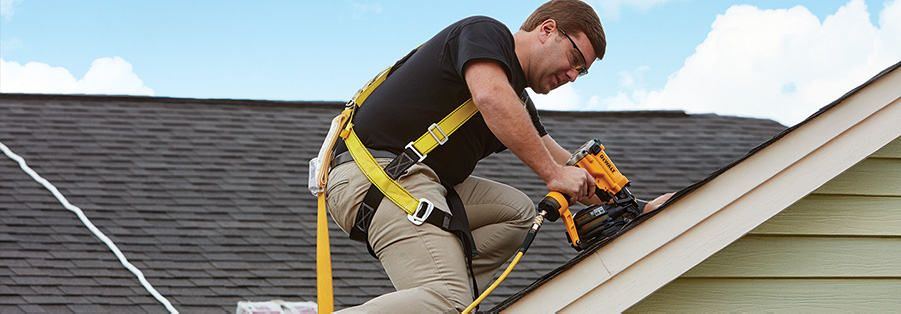
How Often Should a Roof Be Replaced?
The average roof life expectancy highly depends on the type of material used. However, these are only the material’s ideal lifespan, which is more likely to be attained if you keep them clean and well-maintained regularly.
Here we look at six of the most common roofing materials found on houses. This guide will help you understand how often you should replace your roof.
How Long Asphalt Shingles Last
Asphalt 3-tab shingles are the most prevalent type of coverings; however, some are also the least durable roof materials. Asphalt shingles can last for upwards of 15 to 20 years.
Asphalt shingles begin to break down virtually as soon as they are installed. Over time, rainfall slowly erodes the granules from the shingle. As this occurs, sunlight begins to dry out the oils in the shingles. Once the oils have dried out, the shingles lose their elasticity and start to crack and curl.
How Long Architecture Shingles Last
Architecture shingles are an upgraded version of the asphalt shingle. Architecture shingles have overlapping layers that give the shingles added strength, weight, and a 3D appearance. Architecture shingles have a lifespan of 25-40 years.
Architecture shingles are subject to the same erosion and wear as standard 3-tab asphalt shingles. Their increased lifespan is large to the shingle’s thickness, which allows it to stand up to the elements longer.
For the money, architecture shingles are considered the most durable roofing material available.
How Long Wood Shingles Last
Wood shingles are affordable and light enough but are also quite durable. Wood shingles can last for up to 30 years, but they need constant maintenance and cleaning since moisture, algae, and molds can easily damage them. If you regularly maintain your wood shingle roof, you may be able to get up to 50 years from them.
How Long Concrete Tiles Last
Concrete tiles made out of cement should be pretty durable and long-lasting. These are resilient and are capable of protecting your home from heat well. That’s why concrete tiles can generally last for at least 50 years but may even reach 100 years, depending on how well it is taken care of.
Let’s say that you probably don’t need to replace your roof during your generation if made using cement. But the problem here is that cement roof tiles are heavy and should only be used on homes that are reinforced well enough to carry their weight.
Concrete tile roofs also are prone to break. Thus need routine inspections to repair or replace broken tiles. Broken tiles allow sunlight to dry out the weather barrier underneath the tiles. If the weather barrier under the tiles is damaged, a portion of the roof may need to be replaced to repair the damaged underlayment.
How Long Slate Tiles Last
Like cement, slate roof tiles are very hardy and resilient and are supposed to be the most durable materials you can use for your roof. That’s why you can expect slate tiles to last for more than 100 years.
Slate roof tiles can reach three generations, and that is why you should only think about replacing them if they get damaged by external forces such as tornados or hurricanes.
The problems with slate roofs are that slate tiles may be challenging to match in color and thickness. Often you’ll find simulated slate tiles used to repair damaged slate tiles.
How Long Metal Roofing Lasts
Metal roofing made from steel or aluminum is durable and can last 40-80 years of wear and tear before they need to be replaced. However, the more durable metal roofing such as those made from materials like zinc and copper can easily last for more than your entire lifespan and may even reach a century.
There are two primary installation techniques with metal roofs; corrugated and standing metal seam.
Corrugated metal has visible fasteners. These fasteners have rubber bushings that seal the hole made by the fastener. You should routinely seal these fasteners about every 5-10 years.
The standing metal seam has no visible fasteners. Standing metal seam roofs use hidden fasteners with sealed vertical seams. While this application is less likely to leak, it is more expensive to install. Standing seam metal roofs are found on thicker gauge steel and copper roofing.
It is a popular choice on homes with steeper pitched roofs located in areas that receive a lot of snowfall because of its ability to shed snow easily.
How Often Should Roof Sheathing Be Replaced?
Roof sheathing is one of the more integral parts of your roof’s entire system because this serves as the layer that protects moisture from getting past your roof and getting into your home. Because roof sheathing is usually made of wood, it can rot and become damaged.
Roof sheathing exposed to moisture regularly will become soft. This weakens the roof structure and could cause a collapse under heavy snow loads or multiple shingle layers.
There is no consensus on how often you should have your roof sheathing replaced because many factors come into play. If you live in an arid region, you might not need to replace it as often as those who live in places that are prone to rain.
The roof sheathing is typically inspected from the attic. It is customary to replace rotted wood sheathing when the roof coverings are replaced. However, wood rot is not the only reason for replacement. If the roof decking is not thick enough or has had two or three re-roofings, it could be weak from age and the number of nail holes in the wood.
However, when you get your roof inspected by an expert, you should also ask the professional whether or not it is time to replace your roof sheathing even before it begins to leak. That way, you don’t have to wait for leaks to start getting through your roof before you begin to think about replacing the sheathing.
How Often Should a Roof Be Cleaned?
Roof cleaning is never just about keeping your home aesthetically pleasing to your eyes and the eyes of your neighbors. It has a lot to do with your roof’s maintenance, as something as simple as keeping your roof clean can already extend its lifespan while also decreasing the chances of it getting damaged.
How often should a roof be cleaned? It would help if you cleaned the roof annually. Roof cleaning includes the removal of organic debris such as leaves and pine straw. You should professionally remove black streaks on roof coverings caused by algae and mold with cleaning solutions and a soft water wash.
Professionals agree that keeping your roof clean is one of the best ways to maintain your roof as your roof’s condition is directly related to its lifespan. In that sense, the cleaner and better-maintained your roof is, the more likely it will last for more extended periods and even past its usual rated lifespan. But how often should your roof be cleaned?
How often your roof needs to be cleaned depends on many different factors, such as your roof’s material and the type of environment you live in. Asphalt roof shingles are some of the less durable roof materials and may need to be cleaned quite often because of how certain factors can easily damage them.
Meanwhile, if you live in an area with a lot of vegetation close by, you would need to remove any leaves or branches that may have found their way on your roof because decaying organic material may damage your roof.
Meanwhile, houses in places prone to rainy seasons may need frequent roof cleaning because the moisture buildup can form the perfect breeding ground for algae and molds, which can damage your roof on top of how unattractive they are to the eyes.
The consensus is that you should clean your roof at least once a year. You may need more request cleanings, depending on where you live and the environmental surroundings. But, generally speaking, you should clean your roof as needed, especially when certain factors have made it evident to you that your roof needs to be cleaned.
If you are physically able and have the knowledge and skills, you can clean your roof and ensure that you have safety measures in place. Working on roofing surfaces can be very dangerous that can get you severely injured. The best and safest option is to hire a professional to do the job because they have the skills and the equipment needed to clean your roof correctly.
Conclusion
In closing, roof inspection and cleaning are best performed twice a year. Roof inspections can be done by a roofing professional. Proper roofing care will help you get the most out of your roof and protect your house for many years to come. Our home inspection checklist can help you keep track of home maintenance.



